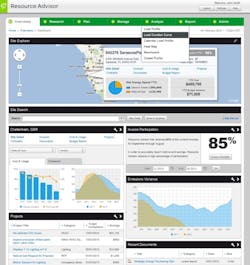It used to be pretty easy to predict America’s attitude about energy waste. The billboards everywhere that blare gasoline prices left us buoyed or dismayed about our energy prospects. And we consumed or conserved accordingly.
But something has changed in the American psyche, particularly among businesses. Even though oil and natural gas prices are low, Americans are are trying to save energy.
“I would say we haven’t seen any less interest in energy efficiency in our business. We have seen growth,” said David Bonn, vice president, sales & client development at Schneider Electric, one of the nation’s behemoth suppliers of energy efficiency equipment for factories, stores and buildings.
Join the discussion about this article and others on our Energy Efficiency Markets Linkedin Group.
In fact, the nation appears to be on a long-term energy-saving binge. The U.S. Energy Information Administration forecasts that energy use will rise a meager 0.4 percent per year, even as GDP grows an average 2.4 percent annually through 2040.
State Pressure
States play a big role keeping on the pressure to save energy. Governors are taking the long-term economic view.
“One of the long-term, state- and region-wide benefits of investing in energy efficiency is that it reduces demand and helps avoid the need to invest in additional infrastructure,” said Jamie Howland, director Acadia Climate and Energy Analysis Center.
Michigan Governor Rick Snyder provided an archetypal example last week when he called for eliminating energy waste to meet 15 percent of Michigan’s energy needs.
“Michigan needs to change its attitude from seeing waste elimination as a nice-to have add-on and see it as the cornerstone for Michigan’s next energy policy,” Snyder told state lawmakers.
More Aware of Electricity Prices
It’s not just oil and gas prices that are down. The real price of electricity is lower than it was prior to 1995, according to the EIA. Power prices did bump up in 2014, and are expected to rise again, although less, in 2015.
Consumers, of course, feel these variations when their utility bills arrive. But businesses now increasingly see the changes immediately through use of energy monitoring and visualization
Schneider Resource Advisor visualization tool
tools that show real-time electricity pricing — an equivalent to the gasoline billboard but right on their desks.
Seeing the data immediately influences energy behavior, Bonn said. Once they see the data, businesses want the “so what,” he said. They want to do know how to use the information to reduce energy waste.
They are motivated, of course, by costs, but that’s no longer the only driver.
Many want to use the data for benchmarking, comparing themselves against competitors or their own past performance, or to meet city or state reporting requirements.
Businesses also are increasingly keen in their pursuit of sustainability goals. For example, more and more companies are taking savings from lower energy costs and reinvesting a percentage into green energy, Bonn said. Schneider calls this a smart dividend re-investment strategy.
‘Energy waste’ is new rallying cry
Bonn specifically hears the term “energy waste” used more and more by businesses, rather than the more conventional ‘energy efficiency’ or ‘conservation.’
“They want to eliminate waste. When the financial people hear about waste it can perhaps garner more attention than ‘energy efficiency projects,’” he said.
Of course, before we pat ourselves on the back too much, you could say today’s Americans are saving a lot of energy without a lot of effort too. The savings reported by EIA come in part from structural changes in the economy — the U.S. has shifted away from manufacturing to less energy-intensive manufacturing. And appliance and fuel efficiency standards help too. We save energy without even trying because equipment and cars operate more efficiently. Power plants also are becoming more efficient as older plants retire and new, more efficient generators take their place.
Whatever the reason, America’s energy-savings binge is good news. Energy prices are nothing if not volatile. Oil prices, in particular, may be down today, but we’ll see where they are tomorrow.
- US spare capacity exhausted
- Arab Oil Embargo
- Iranian Revolution
- Iran-Iraq War
- Saudis abandon swing producer role
- Iraq invades Kuwait
- Asian financial crisis
- OPEC cuts production targets
- 9-11 attacks
- Low spare capacity
- Global financial collapse
- OPEC cuts production targets
About the Author
Elisa Wood
Editor-in-Chief
Elisa Wood is the editor and founder of EnergyChangemakers.com. She is co-founder and former editor of Microgrid Knowledge.
